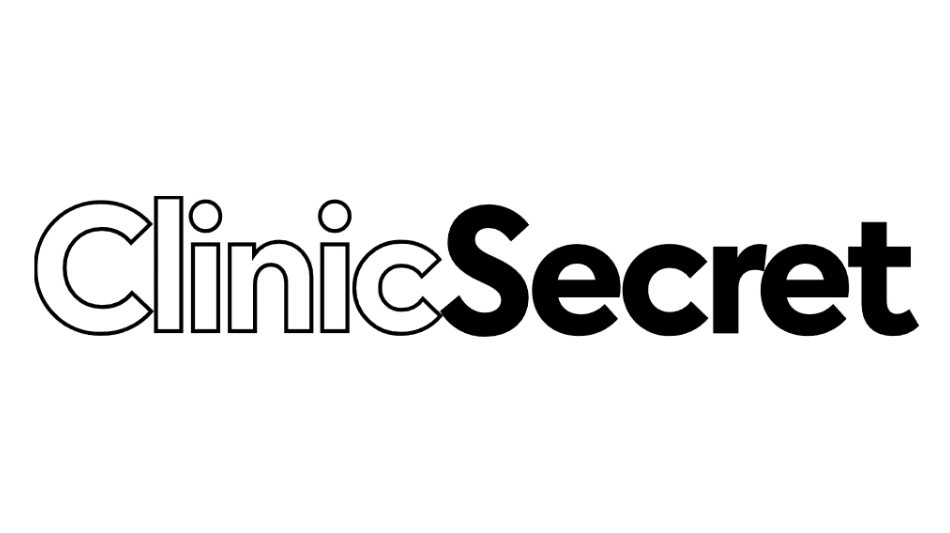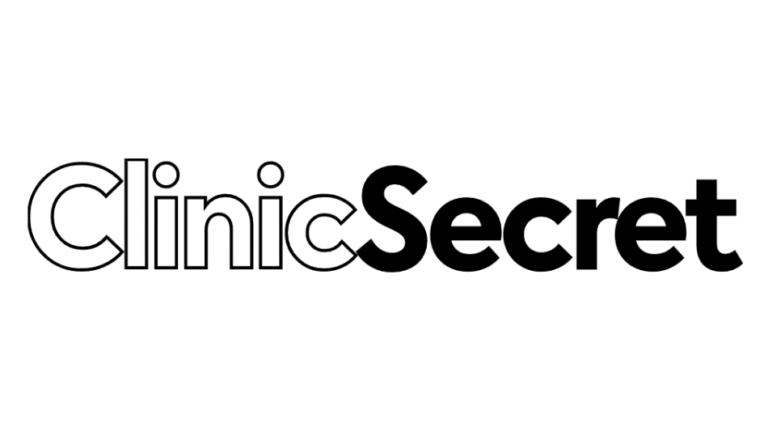Let's talk about the elephant in the room: semaglutide can be expensive. Whether you're looking at Wegovy, Ozempic, or compounded options, understanding the real costs helps you make informed decisions about your treatment.
The good news? You have more affordable options than you might think. While brand name medications can cost over $1,400 per month without insurance, many patients pay far less through insurance coverage, savings programs, or compounded alternatives.
Think of this guide as your roadmap to affordable treatment. You'll learn:
• Real costs of different semaglutide options
• How to maximize insurance coverage
• Ways to save hundreds on brand names
• Affordable alternatives like compounded medications
• Hidden costs to watch for
• Strategies other patients use to make treatment affordable
Brand Name Costs Breakdown

Understanding brand name pricing helps you make informed decisions about your treatment options. Let's look at exactly what these medications cost and why prices can vary so much.
Current Brand Name Pricing
| Medication | Monthly Cost* | Insurance Coverage | Savings Programs |
|---|---|---|---|
| Mounjaro/Zepbound | $1,600 | Growing | Strong savings card |
| Wegovy/Ozempic | $1,400 | Established | Available |
| Saxenda | $1,300 | Well-established | Limited |
*Without insurance or savings programs
Why Prices Vary
Several factors affect what you'll actually pay:
Insurance Status: Having insurance doesn't guarantee coverage, but it can dramatically reduce costs. Some patients pay as little as $25 monthly with good insurance coverage.
Diagnosis Codes: Coverage often depends on whether you're being treated for:
• Diabetes (often better coverage)
• Weight loss (may have restrictions)
• Other health conditions
Provider Type: Where you get your prescription matters. Traditional doctors, weight loss clinics, and telehealth providers might all have different pricing structures.
Real Cost Examples
Let's look at what patients typically pay:
With Good Insurance:
- Brand names: $25-100 monthly
- Prior authorization usually required
- May need to try other medications first
Without Insurance:
- Full retail price applies
- Savings cards can help significantly
- Compounded options become more attractive
Compounded Options
Compounded medications offer a game-changing alternative for many patients, often providing the same active ingredient at a fraction of the cost of brand names.
Understanding Compounded Semaglutide
Let's look at current pricing:
| Medication Type | Monthly Cost | Availability |
|---|---|---|
| Compounded Semaglutide | $150-300 | Widely available |
| Compounded Tirzepatide | $350-500 | Limited availability |
| Compounded Liraglutide | $150-250 | Less common |
Quality and Safety
While compounded medications cost less, they still maintain high quality standards:
• Made in FDA-registered pharmacies
• Uses pharmaceutical-grade ingredients
• Follows strict quality controls
• Requires prescription and medical oversight
Why Choose Compounded Options?
Beyond the obvious cost savings, compounded medications offer several advantages:
Consistent Supply: While brand names face shortages, compounded options often remain available.
Flexible Dosing: Providers can adjust your dose more precisely based on your needs.
Most importantly, the significant cost savings helps many patients stay on treatment longer, increasing their chances of success.
Access Through Telehealth
Many telehealth providers specialize in compounded medications, offering:
• Quick qualification process
• Direct shipping to your home
• Regular provider check-ins
• Ongoing dose adjustments
Insurance Coverage Guide

Navigating insurance coverage for semaglutide can feel like solving a puzzle. Let's break down how coverage typically works and what you need to know to maximize your benefits.
Coverage Requirements
Most insurance companies have specific criteria for covering GLP-1 medications:
Prior Authorization Requirements:
• BMI documentation
• History of weight loss attempts
• Medical necessity letter
• Lab work in some cases
The key difference? Coverage often depends on whether you're being treated for diabetes or weight loss. Diabetes treatment typically sees better coverage rates.
Understanding Your Benefits
Before starting treatment, check these crucial details:
Your Plan's Coverage:
• Formulary status (which brands are covered)
• Required copays
• Deductible impact
• Pharmacy network restrictions
Many insurance companies prefer certain brands over others. For example, some may cover Ozempic but not Wegovy, even though they contain the same medication.
When Insurance Denies Coverage
Don't give up if you get denied. You have options:
• Appeal the decision with additional documentation
• Consider switching to a covered alternative
• Look into manufacturer savings programs
• Explore compounded options
Remember: Insurance coverage isn't your only path to affordable treatment. Many patients find other options work better for their budget.
Saving Money on Brand Names

Even without insurance coverage, you can still make brand name medications more affordable. Let's explore the programs and strategies that can help reduce your costs.
Manufacturer Savings Programs
Each brand offers different support:
Mounjaro/Zepbound Card:
• Can reduce cost to $25/month
• Must have commercial insurance
• Savings up to $500 per fill
• Limited time program
Wegovy/Ozempic Savings:
• Potential savings up to $200/month
• Requirements vary by program
• May need to reapply periodically
Additional Savings Strategies
Beyond manufacturer programs, consider:
Pharmacy Options: Some pharmacies offer significant discounts through:
• Membership programs
• Preferred pricing
• Price matching
• Bulk fill discounts
Remember: These savings programs typically don't work with Medicare or Medicaid. If you're on government insurance, you'll need to explore other options.
Maximizing Your Savings
Smart strategies that work:
• Compare pharmacy prices (they can vary significantly)
• Ask about longer prescription fills
• Consider mail-order options
• Combine multiple discount programs when possible
For many patients, combining these strategies can make brand name medications manageable, though compounded options often remain more affordable.
Telehealth Cost Advantages

Telehealth providers often offer the most cost-effective path to treatment, especially when you consider the total cost of care.
Understanding Total Treatment Costs
The traditional medical route can add up quickly. You're looking at multiple office visits costing $100-300 each, required lab work, prescription costs, plus hidden expenses like time off work and travel. These costs stack up before you even start treatment.
Telehealth simplifies this with a streamlined approach:
• One-time consultation ($50-150)
• Optional lab work
• Direct access to medication
• No travel or time off needed
Package Deals and Programs
Many telehealth providers have revolutionized pricing with comprehensive packages. These typically include your consultation, regular check-ins, prescription management, and ongoing support – all for one transparent price.
These all-inclusive programs often save patients hundreds of dollars compared to traditional medical routes, especially when combined with compounded medication options.
Cost-Saving Benefits
Telehealth's efficiency creates unique advantages. You get direct access to providers who specialize in weight loss medications and understand the best cost-saving strategies. They're familiar with both brand name and compounded options, helping you choose the most affordable path for your situation.
Most importantly, telehealth eliminates the hidden costs that often surprise patients in traditional medical settings. The pricing is transparent, and you know exactly what you're paying for.
Making treatment affordable often requires getting creative with payment options. Let's explore ways to manage costs beyond traditional insurance and savings programs.
Health Spending Accounts
FSA and HSA funds can help manage treatment costs. These pre-tax accounts cover most weight loss treatments when prescribed by a healthcare provider. You can use them for:
• Medication costs
• Provider consultations
• Required lab work
• Related medical supplies
Payment Plans and Financing
Many telehealth providers understand that upfront costs can be challenging. They often offer flexible payment options including:
Monthly payment plans with no interest
Subscription-style programs that bundle services
Pay-as-you-go options for ongoing care
The key is finding a payment structure that fits your budget while maintaining consistent treatment.
Cost-Effective Strategies
Smart approaches that successful patients use:
Start with a shorter trial period to ensure the medication works for you before committing to longer-term treatment.
Consider compounded options early if brand name costs are prohibitive. Many patients find they get similar results at a fraction of the cost.
Keep track of all medical expenses – they might be tax-deductible when they exceed a certain percentage of your income.
Remember: The most expensive treatment is one you can't maintain. Focus on finding a sustainable financial approach that allows you to stay consistent with your medication.
Making It Affordable
Long-term success with semaglutide depends on finding a sustainable way to manage costs. Let's look at practical strategies that help patients stay on treatment.
Budgeting for Success
Think of semaglutide as an investment in your health. Many patients find success by:
Planning ahead for monthly medication costs
Setting aside money from each paycheck
Cutting back on less essential expenses
Tracking health savings to offset costs
Understanding Value vs Cost
While initial prices might seem high, consider the bigger picture. Many patients report significant savings in other areas:
• Reduced food costs due to eating less
• Lower healthcare costs as health improves
• Fewer expenses on failed diet programs
• Savings on medications for weight-related conditions
Long-Term Planning
Most successful patients need 6-12 months of treatment for optimal results. Create a financial strategy that considers:
Provider Choices: Telehealth often offers the most cost-effective approach, especially when combined with compounded medications.
Timing Matters: Starting treatment when you can fully commit financially helps avoid interruptions that could affect your results.
Remember: The goal is finding a sustainable approach that lets you complete your full course of treatment. Sometimes choosing a more affordable option, like compounded medications through telehealth, makes more sense than struggling with brand name costs.
Conclusion
Understanding your cost options for semaglutide treatment puts you in control of both your health journey and your finances. While brand name medications like Wegovy and Ozempic can cost over $1,400 monthly without insurance, affordable alternatives exist.
Let's recap your main options:
Brand Names with Insurance:
• Potentially low copays ($25-100)
• Better coverage for diabetes
• Savings programs available
Compounded Medications:
• $150-300 monthly for semaglutide
• No insurance hassles
• Consistent availability
Telehealth makes accessing either option simpler and often more affordable than traditional medical routes. The key is choosing an approach that you can sustain throughout your weight loss journey.
Ready to Explore Your Options?
Our directory includes carefully vetted telehealth providers who offer both brand name and compounded medications. They can help determine the most cost-effective treatment plan for your specific situation.
Find Affordable Treatment Options
Medical Disclaimer: This article is for informational purposes only and does not constitute medical advice. Always consult with a qualified healthcare provider before starting any weight loss program or medication. Individual results may vary, and medication success depends on many factors including adherence to medical guidance and lifestyle modifications.
Frequently Asked Questions
How much does brand-name semaglutide really cost if I have no insurance?
List prices hover around $1 400–$1 600 per month for Wegovy, Ozempic, or Zepbound. Pharmacy discount cards might shave off 5-10 %, but you should still budget well over a thousand dollars unless you use a manufacturer coupon tied to commercial insurance.
What’s a realistic copay if my plan covers GLP-1 medications?
With strong coverage and an approved prior authorization, many patients pay $25–$100 per 30-day fill after meeting their deductible. Diabetes codes (Ozempic) generally see lower copays than weight-loss codes (Wegovy).
Why does the insurance diagnosis code matter so much?
Plans often place GLP-1s for diabetes on a preferred tier while classifying weight-loss use as “lifestyle.” The right ICD-10 code (E11 for type 2 diabetes versus E66 for obesity) can determine whether you owe a small copay or full retail price.
Can I combine a manufacturer savings card with insurance?
Yes—if you have commercial (non-government) insurance. Savings cards typically reduce your out-of-pocket to as little as $25 for 12–24 months, but they won’t work with Medicare, Medicaid, or TRICARE.
What do compounded semaglutide or tirzepatide cost each month?
Semaglutide compounds from 503B pharmacies typically run $150–$300; tirzepatide compounds land around $350–$500. Pricing includes the vial, needles, and shipping but not your telehealth consult.
Are compounded versions safe and legal?
Quality compounds are produced in FDA-registered 503B outsourcing facilities, use USP-grade ingredients, and require a prescription. Always ask for a certificate of analysis and confirm the pharmacy’s 503B status.
How do telehealth packages lower my overall expense?
Most bundle the initial consult, ongoing check-ins, and prescription management for $99–$200 per month—eliminating repeated office-visit fees and letting you apply the rest of your budget to medication.
Can I pay for semaglutide with my HSA or FSA?
Yes. IRS rules allow pretax HSA/FSA funds for prescription weight-loss drugs when they’re doctor-directed. Save every receipt; your administrator may request documentation.
What if my insurance denies coverage—should I appeal?
Appeals succeed about 30 % of the time after adding BMI data, comorbidity notes, and proof of prior weight-loss attempts. If a second denial comes back, most people pivot to compounded or self-pay telehealth options.
Do I save money by filling 90-day prescriptions?
Sometimes. Certain pharmacies offer 90-day supply discounts (5-15 %). Check whether your insurer allows extended fills for GLP-1s; many limit them to 30-day quantities due to cost.
Will weight-loss on semaglutide lower other healthcare expenses?
Many users report offset savings: fewer takeout meals, reduced spending on other diet plans, and long-term drops in costs for blood-pressure or diabetes meds as health markers improve.
How long should I budget for treatment?
Most providers recommend at least 6–12 months of continuous use. Plan your finances for a year of medication plus consult fees so you’re not forced to stop mid-journey.
Are there financing or pay-over-time options for telehealth programs?
Yes. Several clinics partner with services like Klarna, Affirm, or in-house no-interest plans that break the package into monthly payments—handy if upfront costs are a barrier.
What hidden fees should I watch for?
Look out for mandatory “program” charges tacked onto each shipment, injection-training fees, or surprise lab-order costs. Legitimate providers list every fee before you enter payment details.
Is compounded medication the best value overall?
For many self-pay patients, yes: $150–$300 monthly keeps costs predictable, avoids insurance wrangling, and provides steady supply during brand shortages—making long-term adherence far more affordable.













